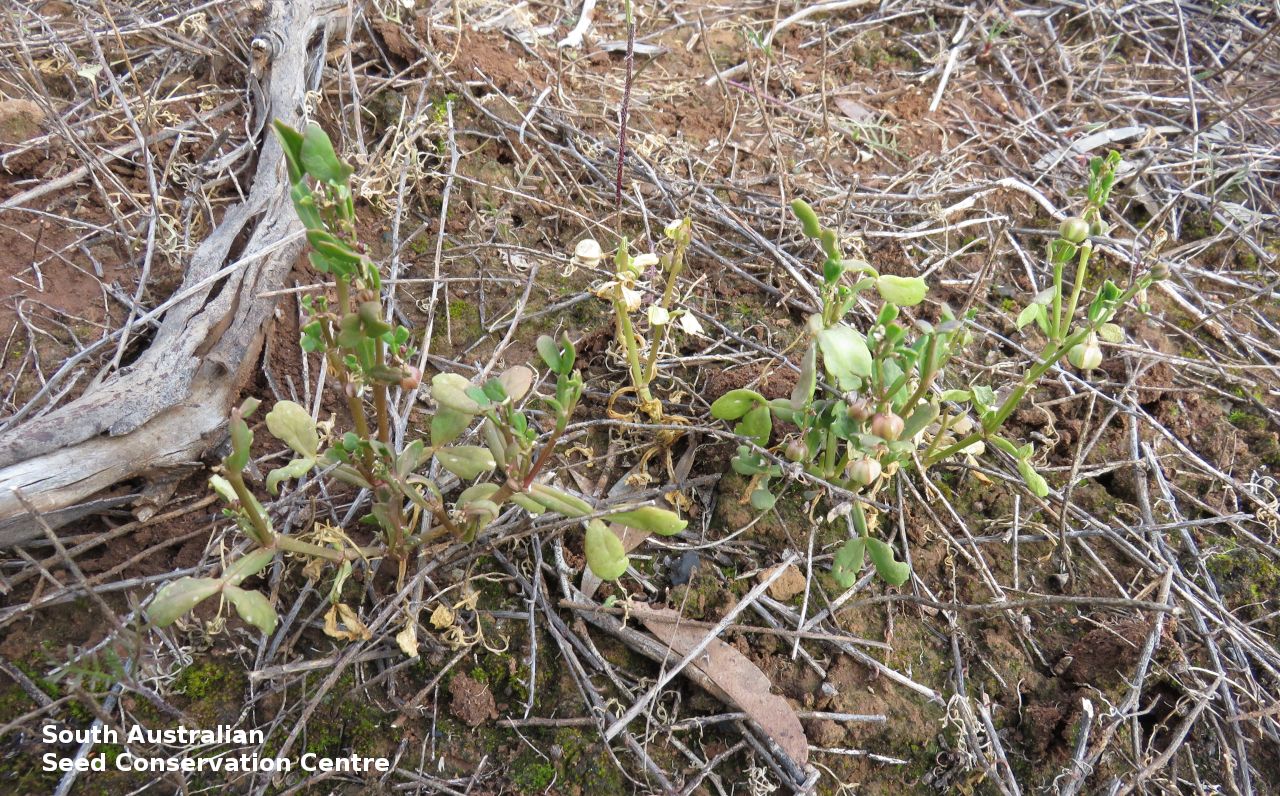
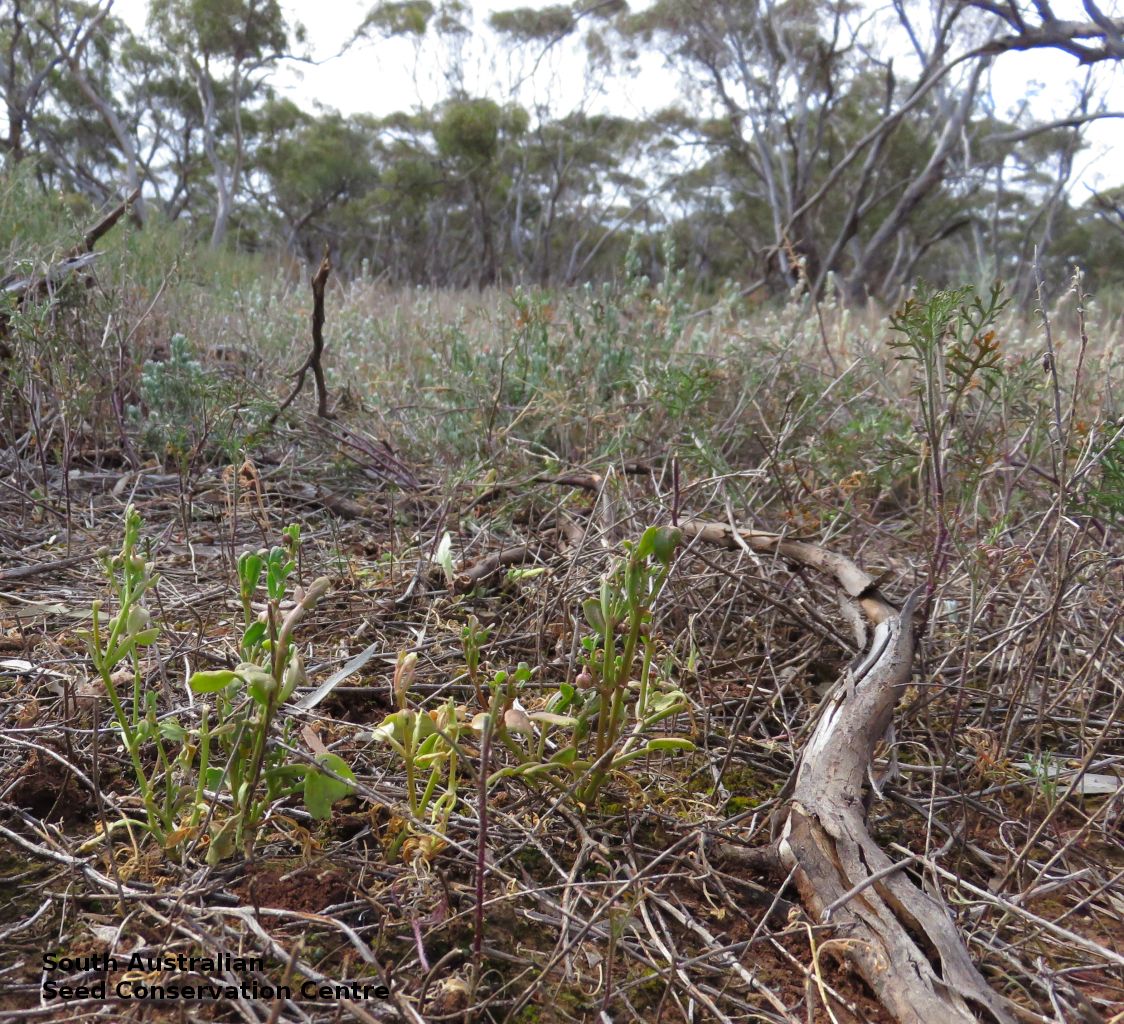

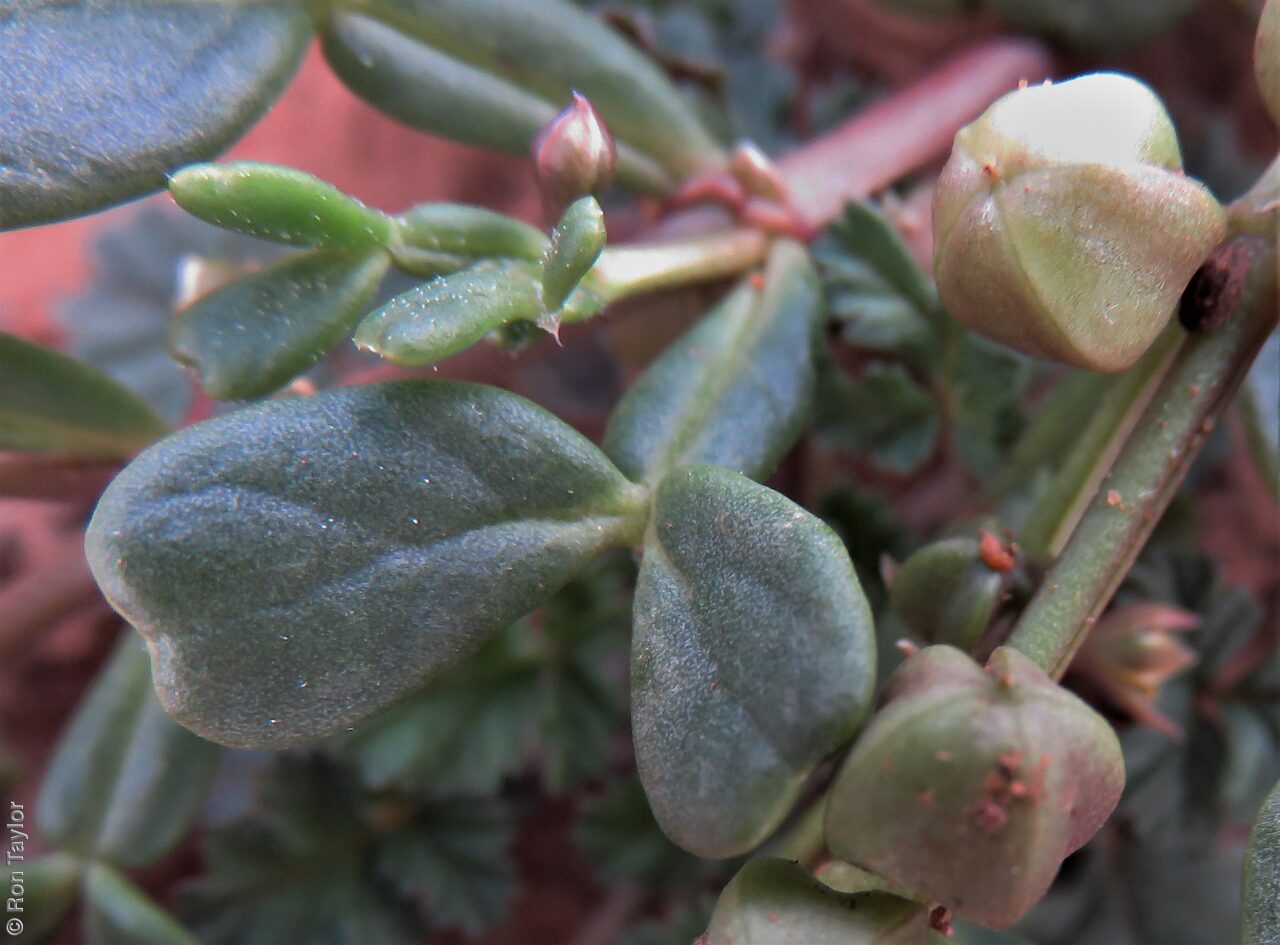

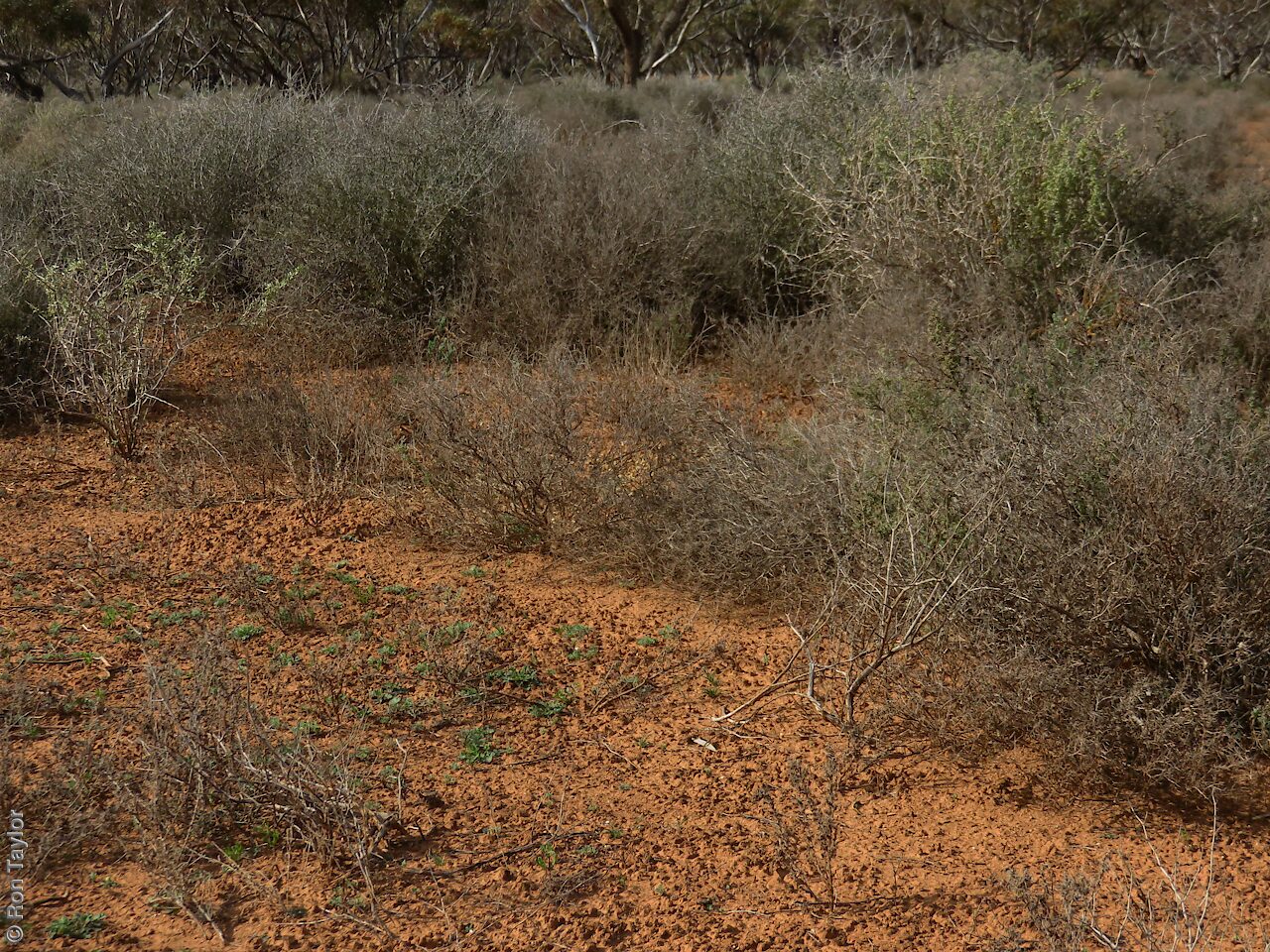

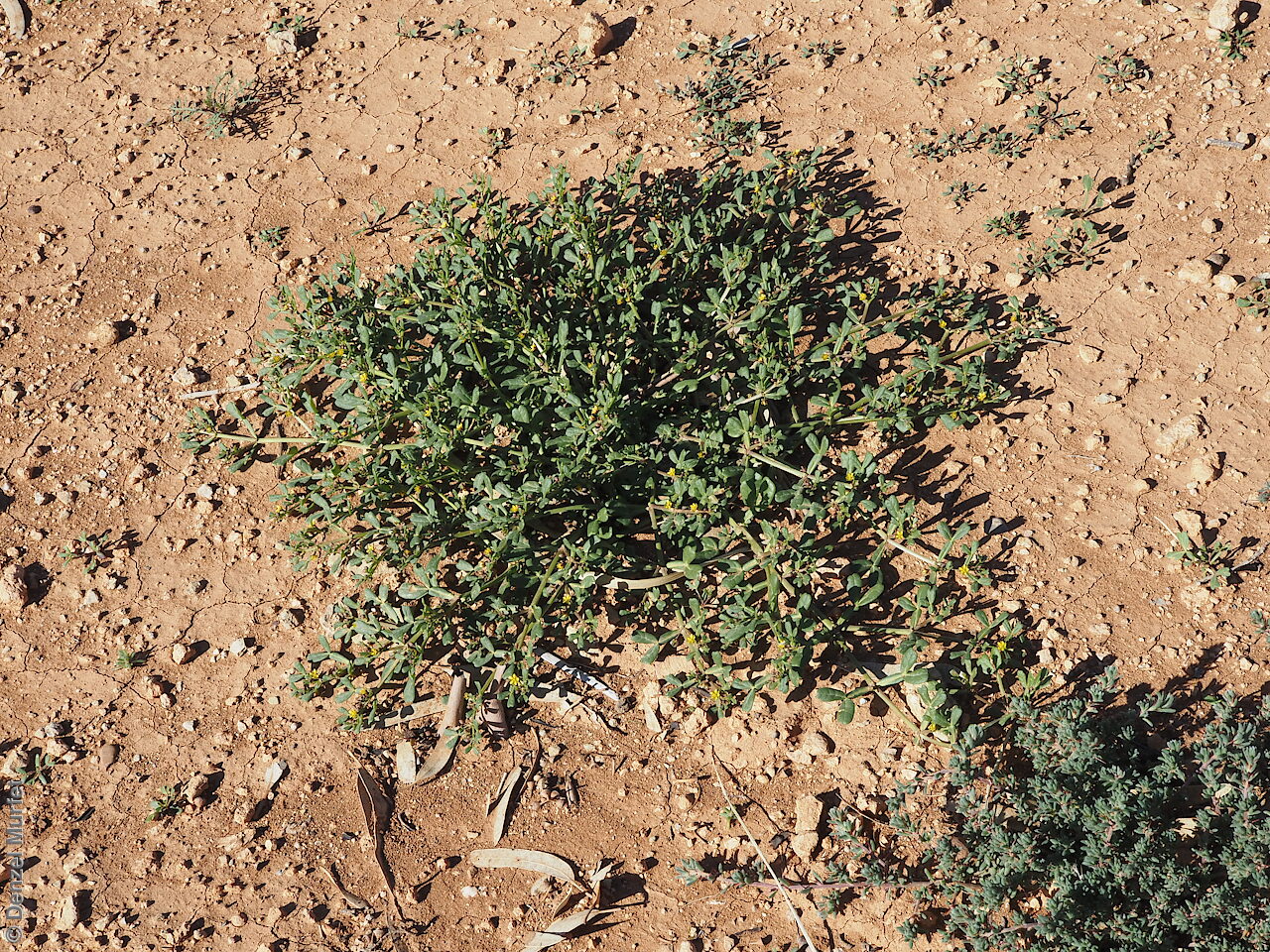
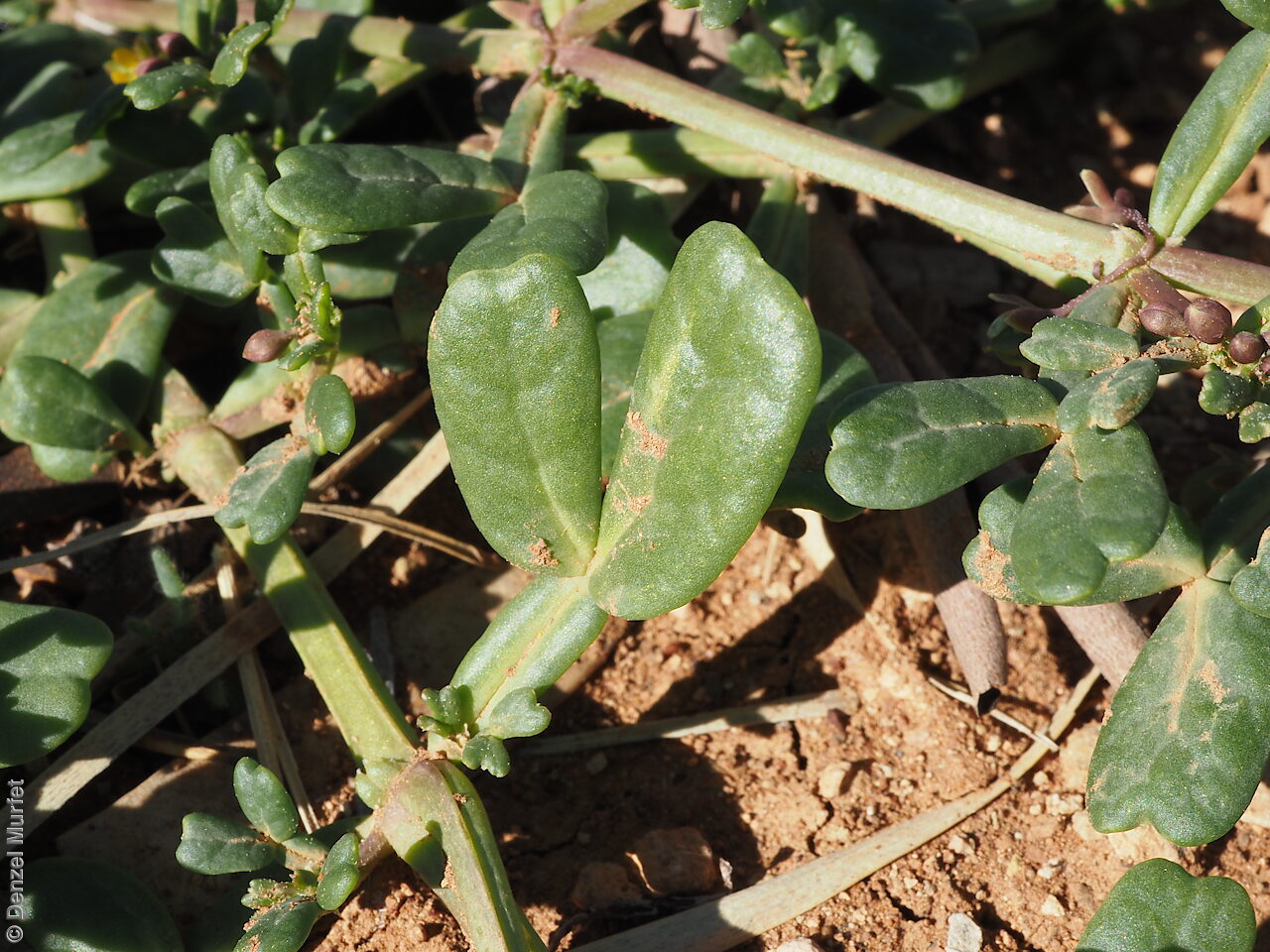
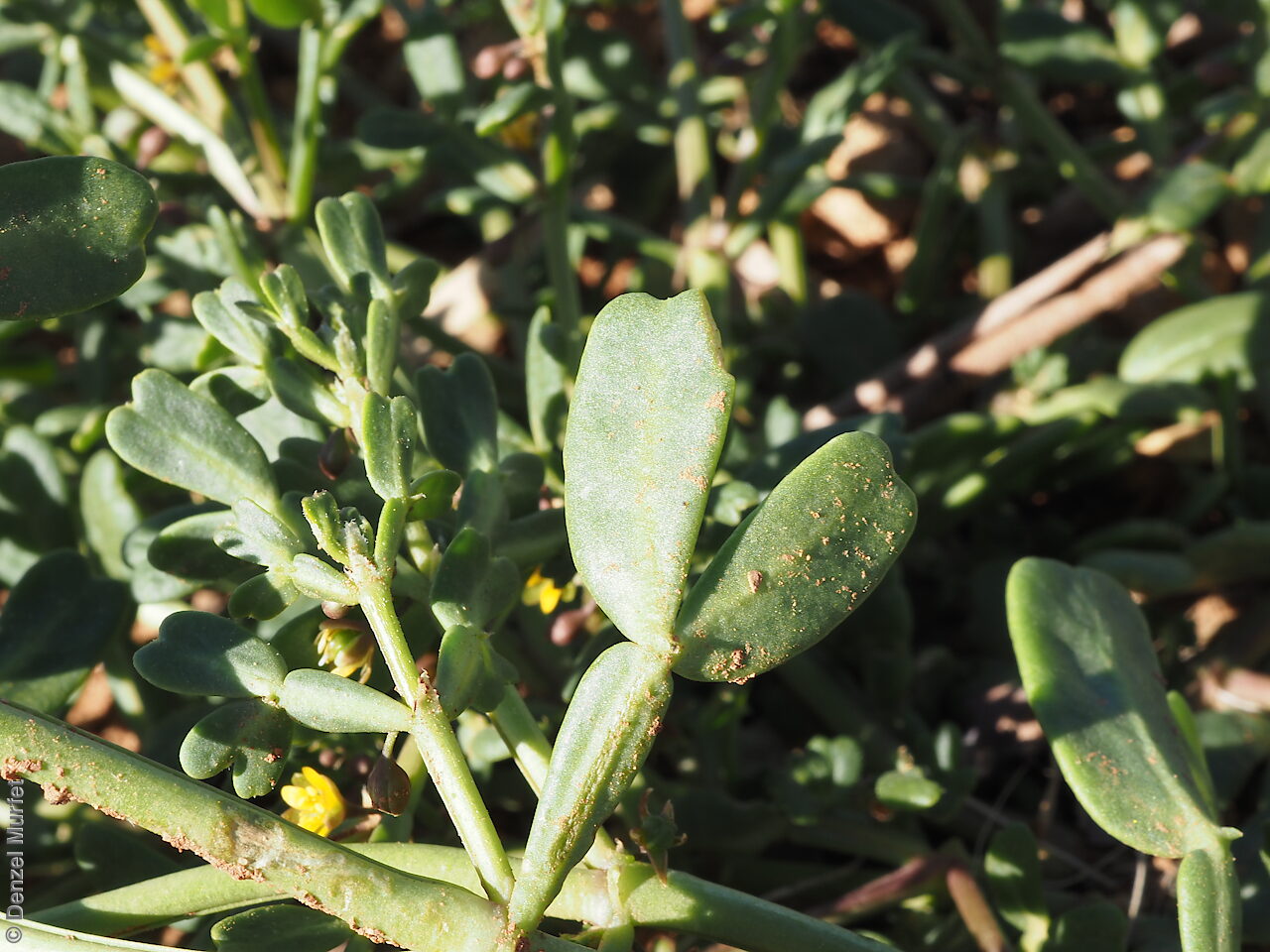
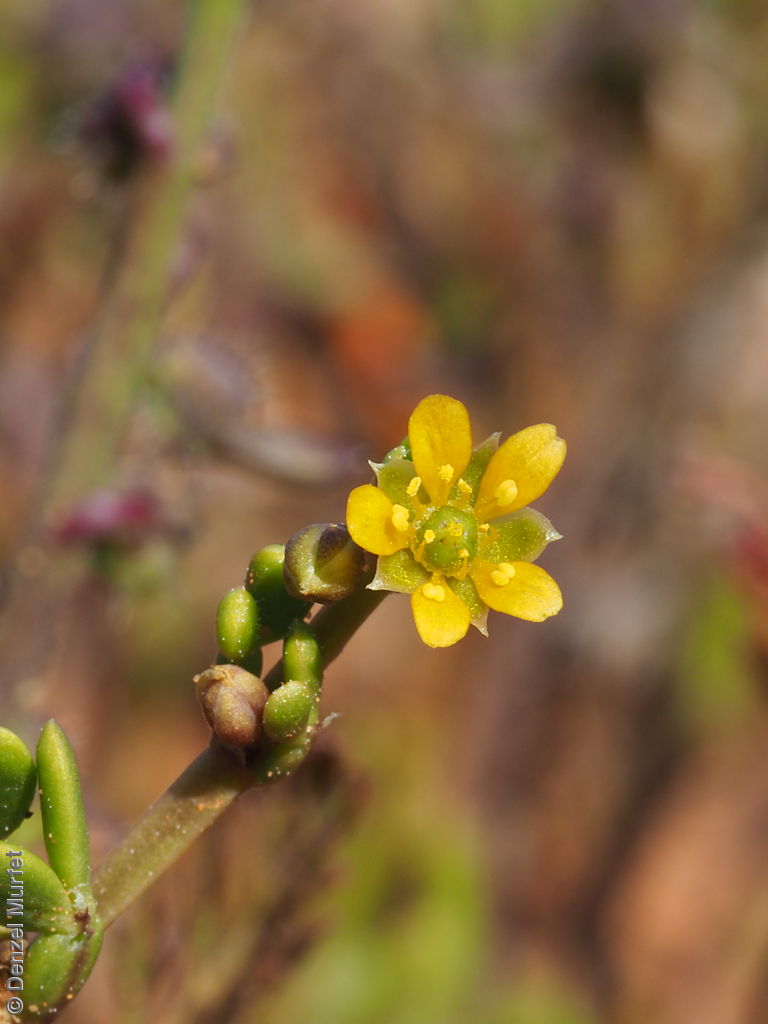
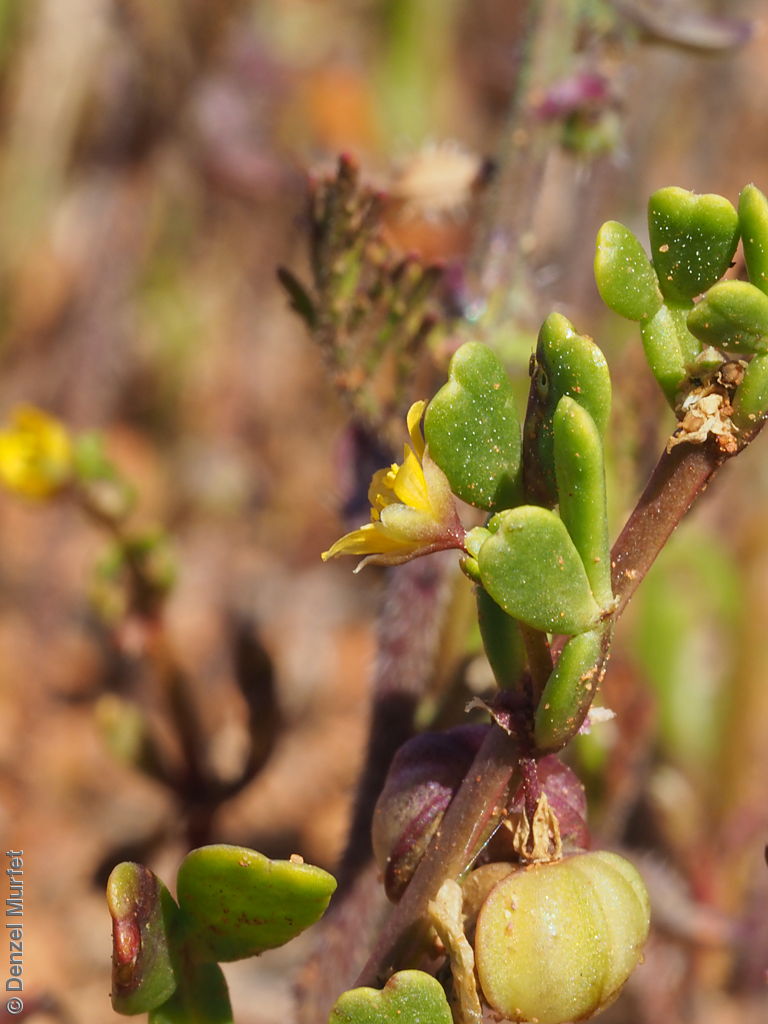
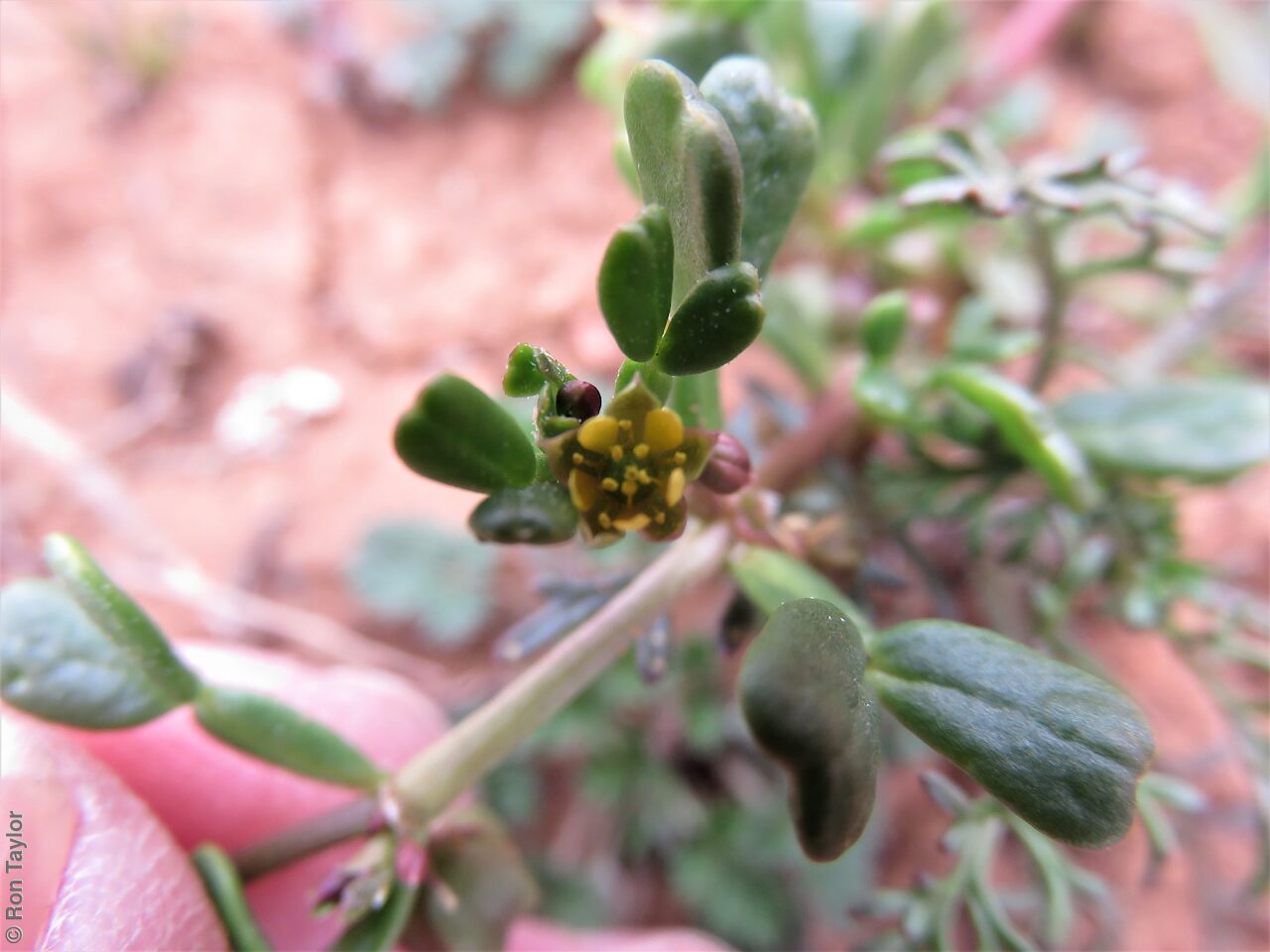
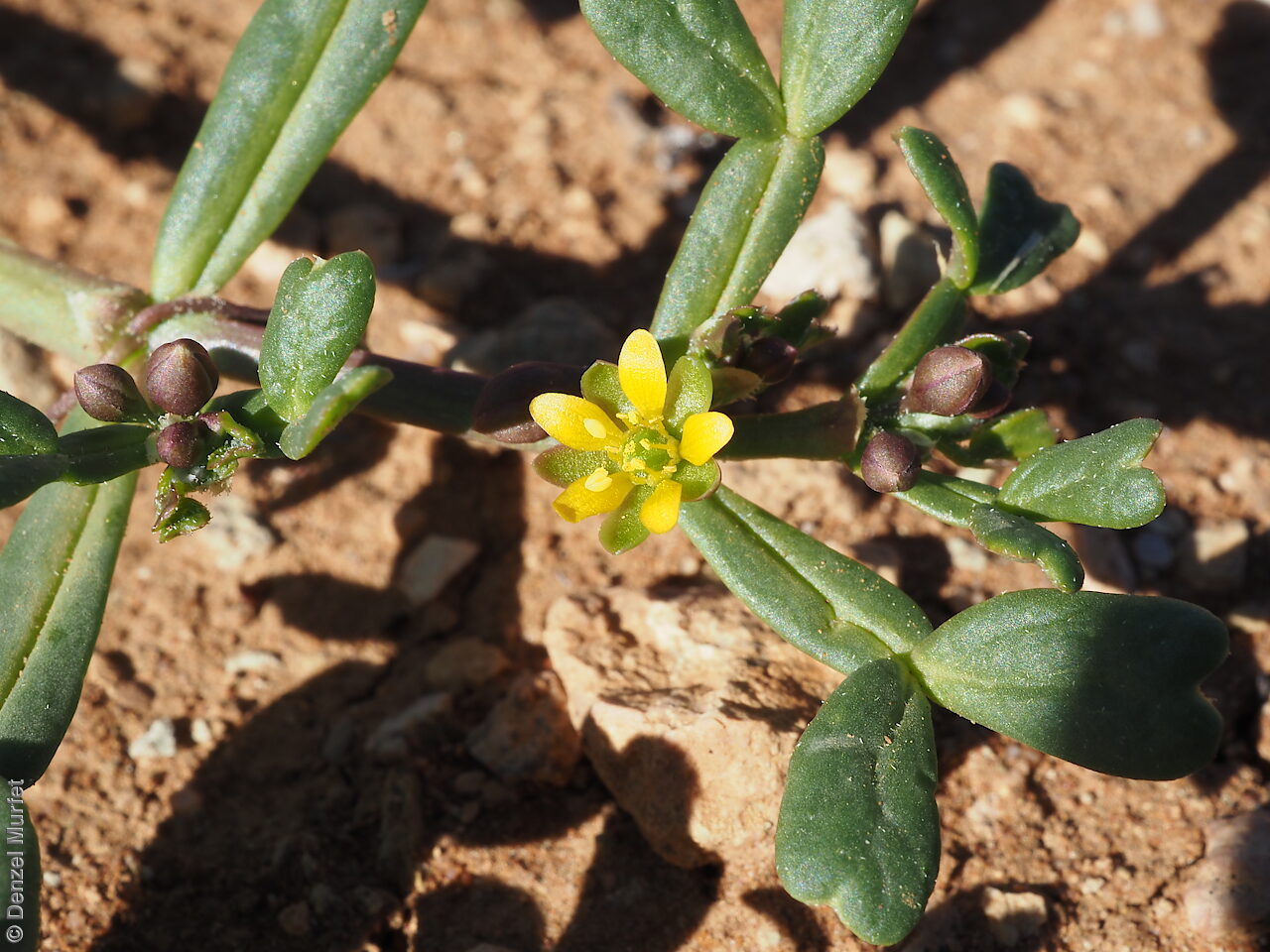

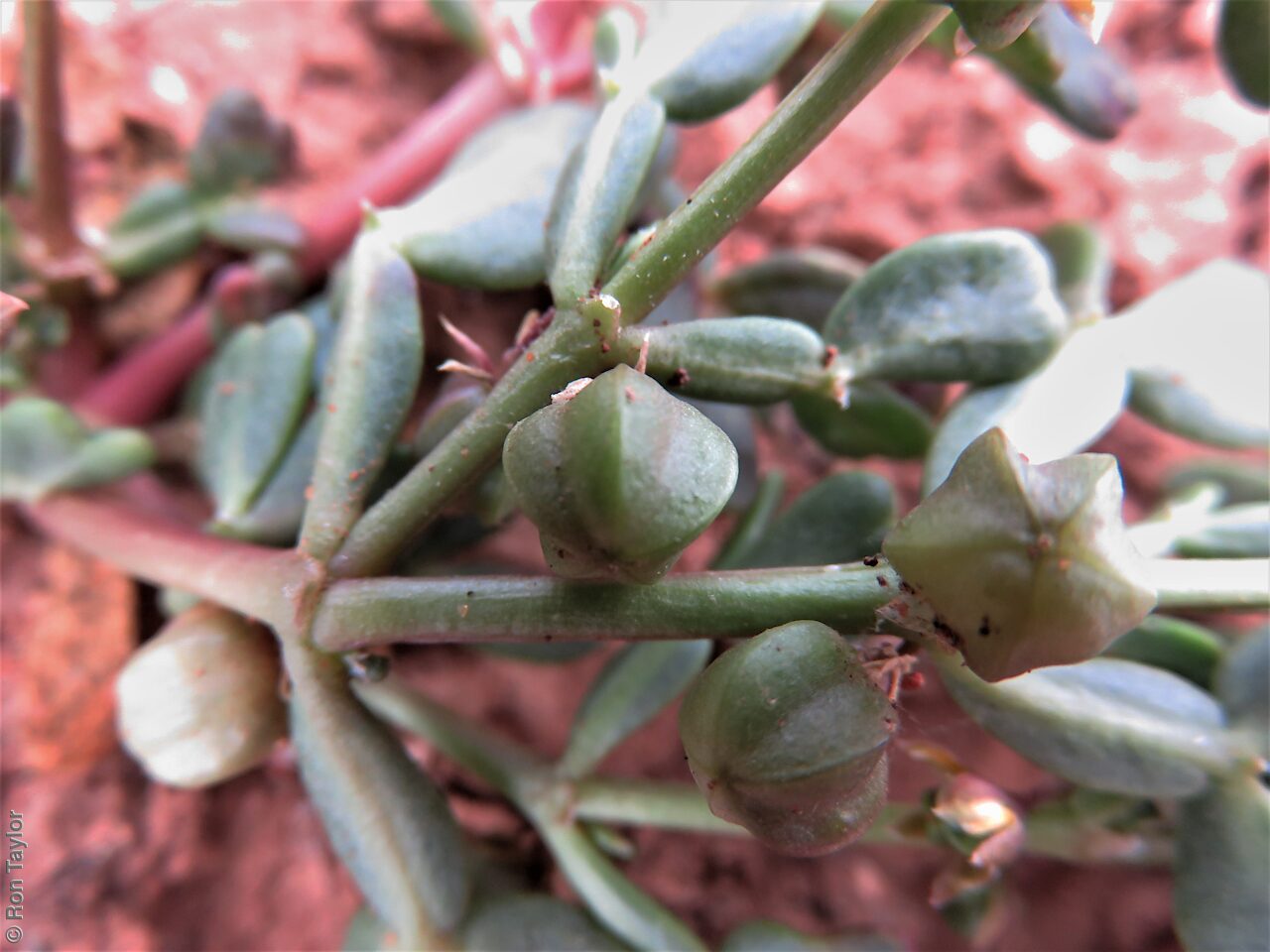
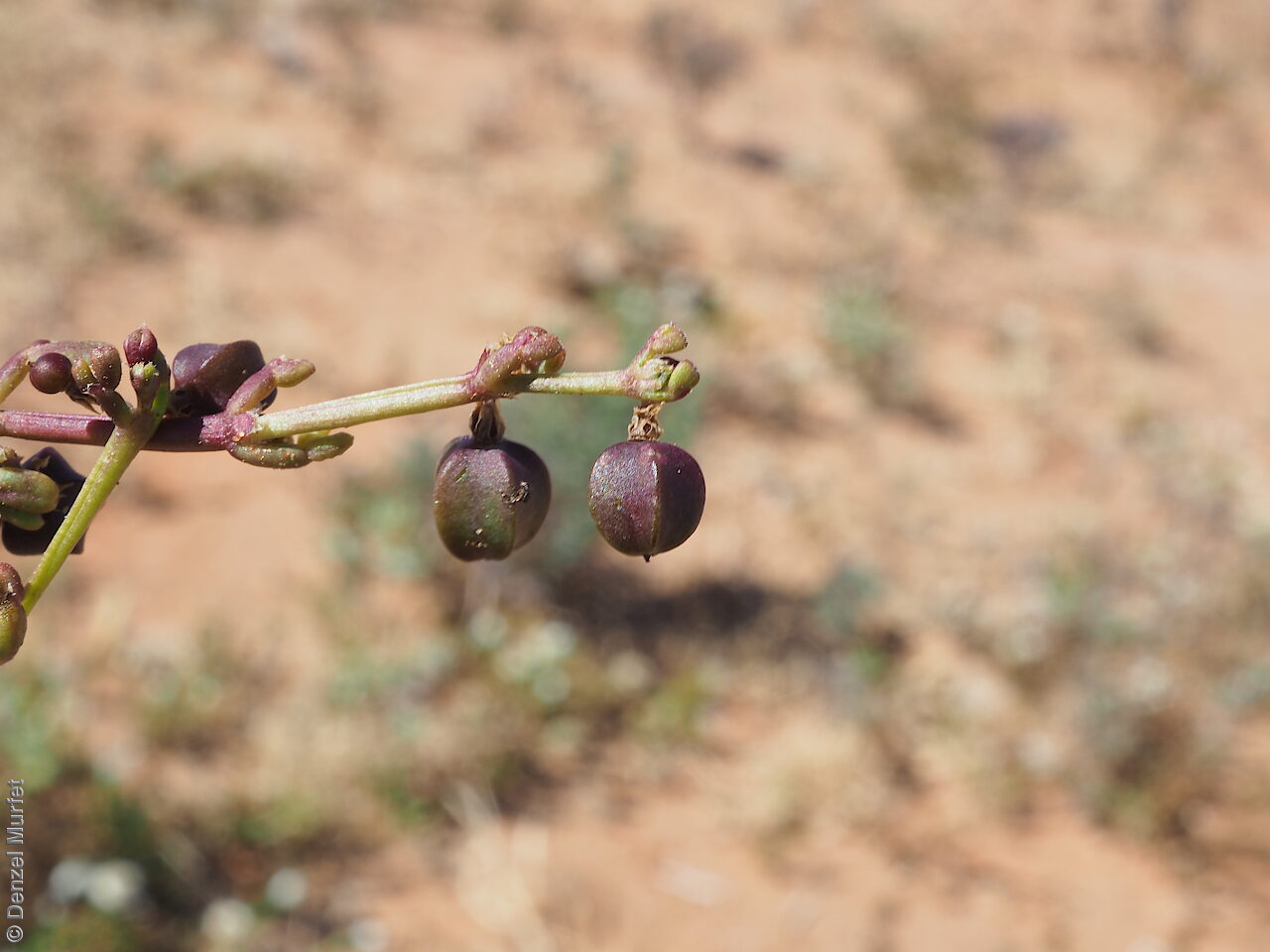
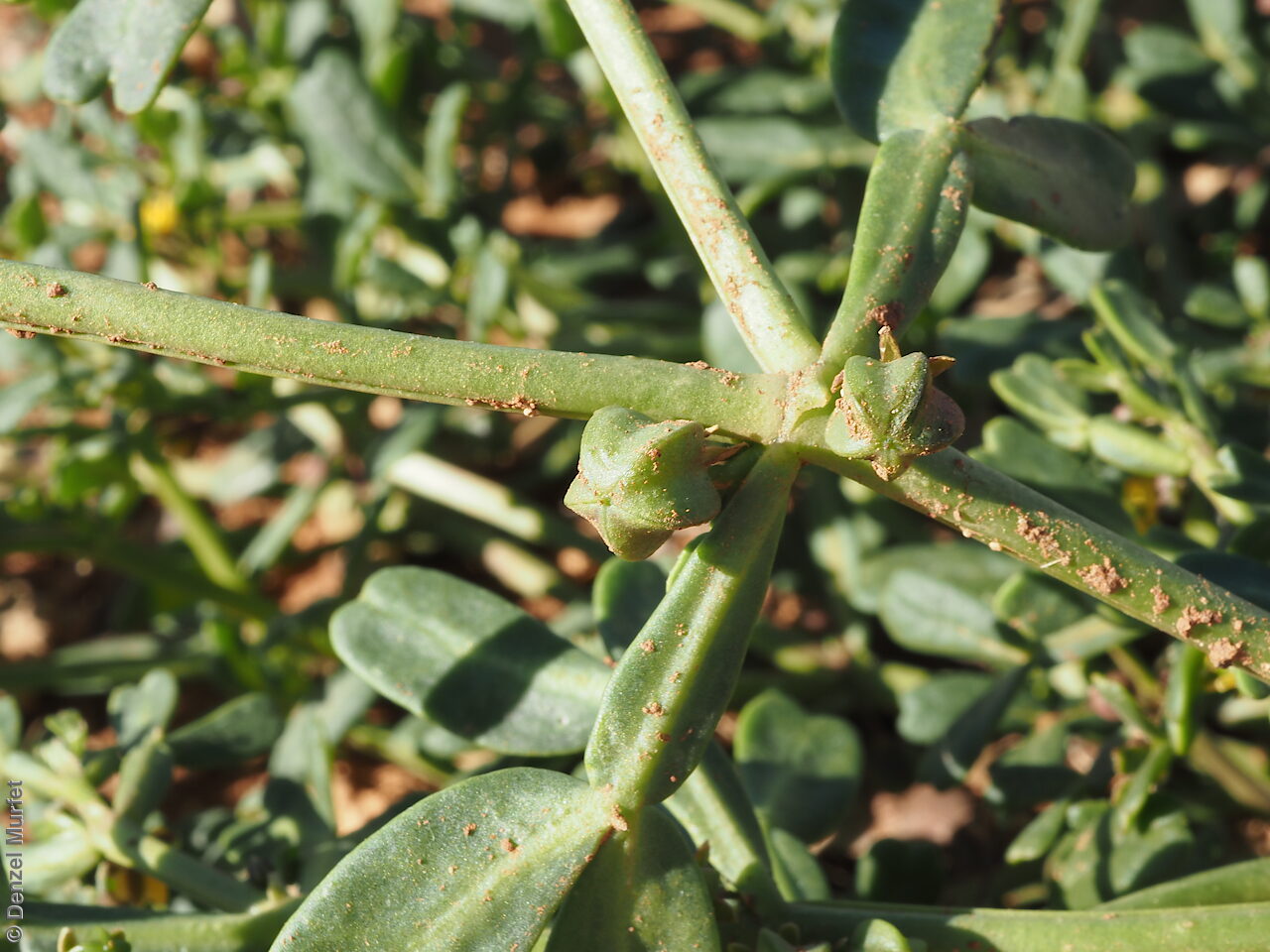
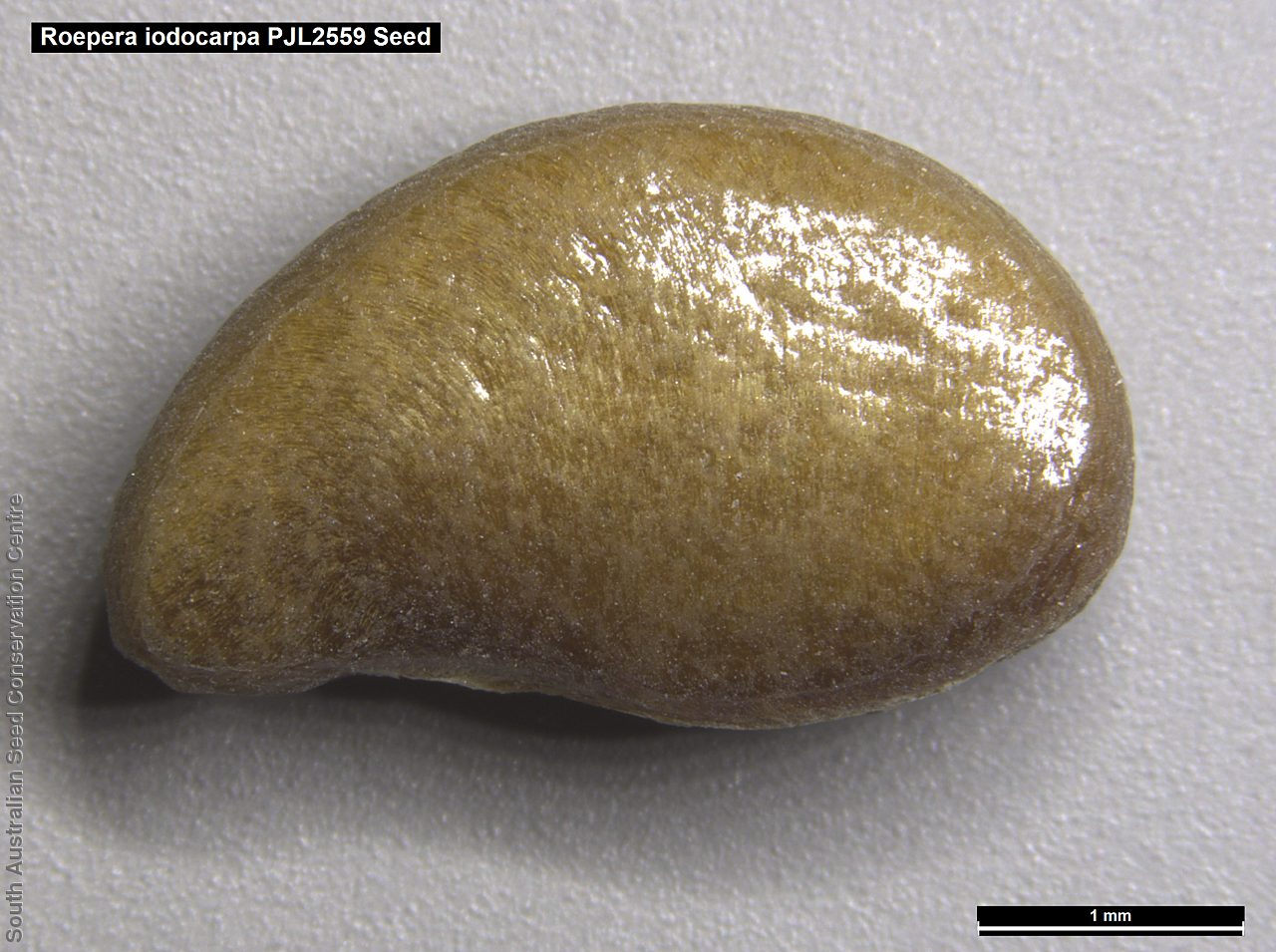
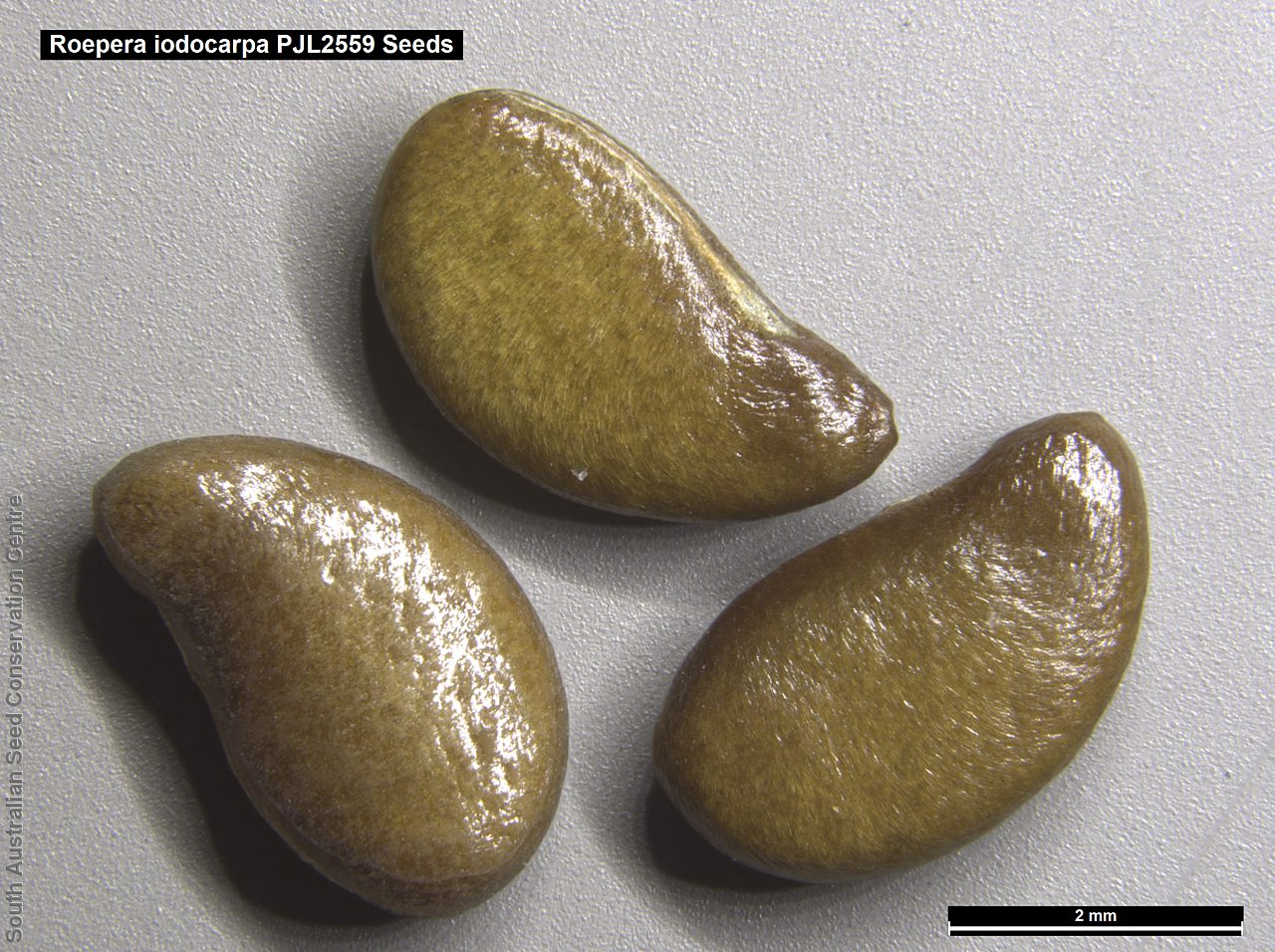

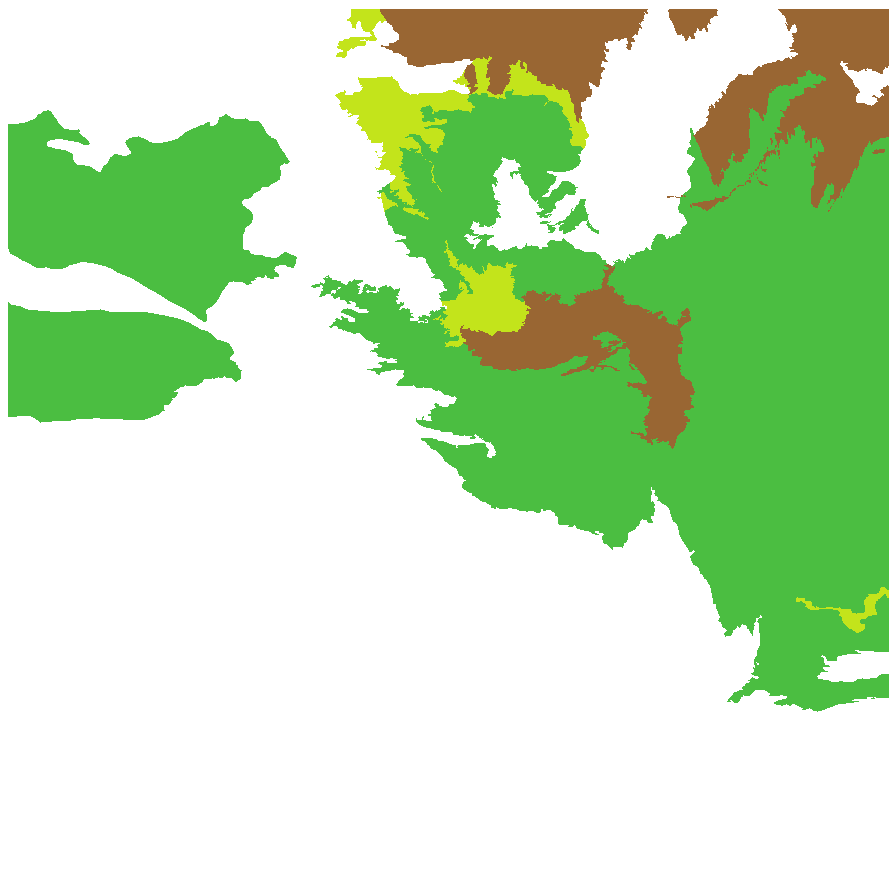
Botanical art
Prior names
Zygophyllum iodocarpum
Zygophyllum hybridum, partly
Common names
Violet Twinleaf
Etymology
Roepera (formally Zygophyllum which is from the Greek 'zygon' meaning pair and 'phyllon' meaning leaf; referring to the pair of leaflets making up each leaf) is named after Johannes August Christian Roeper (1801 -1885), a German botanist and physician. Iodocarpa from the Greek 'iodes' meaning violet and 'karpos' meaning a fruit; alluding to the red-purple blush of the fruits and branches.
Distribution and status
Found across the northern part of South Australia, growing in open areas on clay plains, alluvial flood plains or gibber plains, but also in bare areas within chenopod shrublands. Also found in all mainland states. Native. Common in South Australia. Common in the other states.
Herbarium regions: North Western, Lake Eyre, Nullarbor, Gairdner-Torrens, Flinders Ranges, Eastern, Eyre Peninsula, Murray
AVH map: SA distribution map (external link)
Plant description
Spreading annual herb with red-purple branches. Leaves succulent, oblong, Y-shaped to 2 cm long, distinctly articulate at the base, stem winged. Inflorescence paired at each node with yellow flowers. This species is related to Roepera eichleri, R. tesquorum and R. rowelliae and is distinguished by its paired, shortly pendent, wider than high, often purple-tinged, 5-angled fruits with a very short 5-lobed style. Flowering between April and August. Fruits are red-purple globular capsule to 7 mm long, with 5-angles and 5 cells, each cell with 1-2 seeds. Seeds are brown tear-drop to 4 mm long and 2.5 mm wide, with a smooth surface. Seed embryo type is spatulate fully developed.
Seed collection and propagation
Collect seeds between June and October. Collect semi-dried and dried capsules by running your hands through the stems of the plant. Mature fruits will come off easily and will have a hard and dark seed inside each segment. Place the capsules in a tray and leave to dry for 1 to 2 weeks, depending on how green the fruit is. Then rub the dried capsules to dislodge the seeds. Use a sieve to remove the unwanted material. Store the seeds with a desiccant such as dried silica beads or dry rice, in an air tight container in a cool and dry place. Seed viability is usually high.
| Location | No. of seeds (weight grams) | Number of plants | Date collected | Collection number Collection location | Date stored | % Viability | Storage temperature |
|---|---|---|---|---|---|---|---|
| BGA MSB | 4,500 (21.06 g) 4,500 (21.06 g) | 100+ | 14-Sep-2007 | PJL2559 Flinders Ranges | 19-Sep-2008 | 95% | -18°C |
| BGA | 24,800 (84.95 g) | 50+ | 7-Sep-2016 | DJD3408 Nullarbor | 1-Nov-2017 | 95% | -18°C |
Number of plants: This is the number of plants from which the seeds were collected.
Collection location: The Herbarium of South Australia's region name.
% Viability: Percentage of filled healthy seeds determined by a cut test or x-ray.